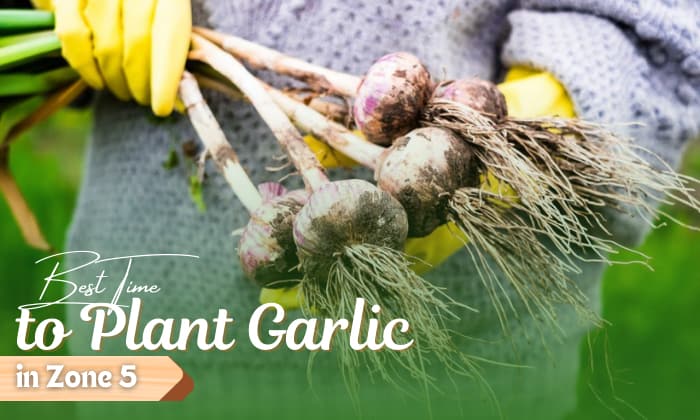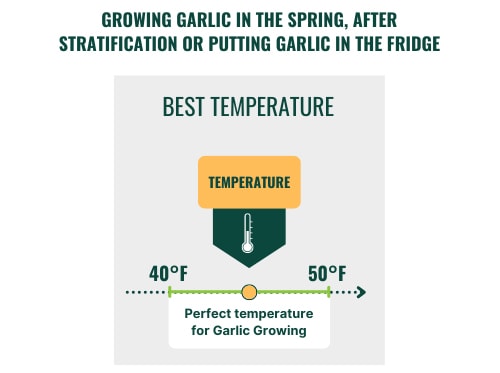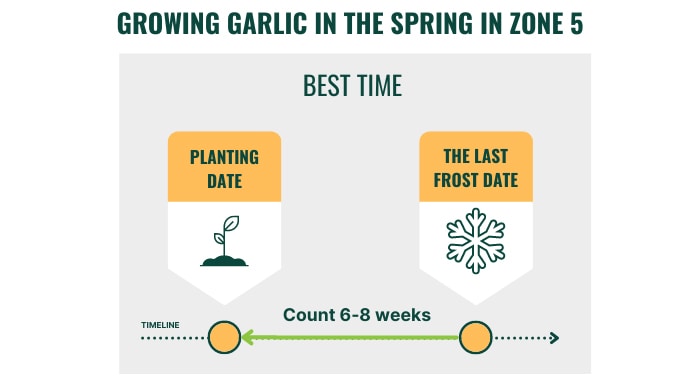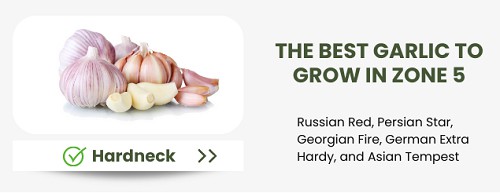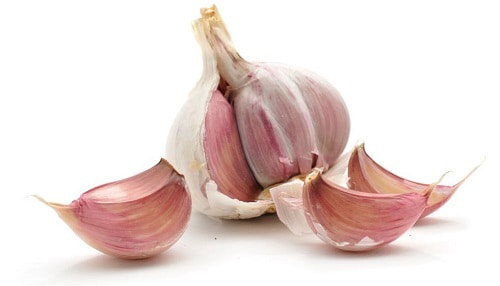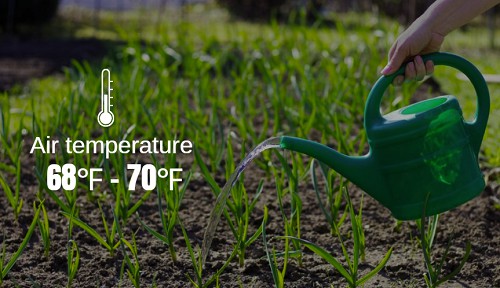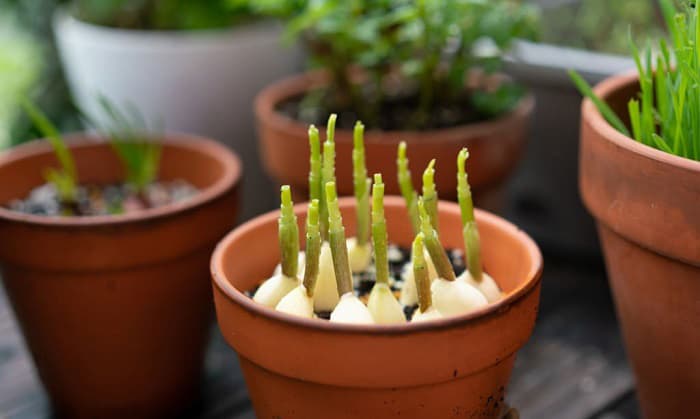Garlic grows well in many parts of the United States, including lower hardiness regions, due to their cold weather requirements.
If you’re pondering when to plant garlic in zone 5, the best time to cultivate them is in the fall from mid-October to mid-November, or in the spring once the ground is workable and the bulbs have been stratified.
Adventurous home gardeners may also direct-sow garlic six to eight weeks before the last frost, or around February and March in zone 5.
Table of Contents
Best Time to Plant Garlic in Zone 5
1. In the fall from October to November
Fall is the ideal growing season for garlic in zone 5, as the cool temperatures during this season suit the plant’s vernalization requirements.
In practice, subjecting garlic bulbs to at least 40℉ for one to two months will help them form roots and be ready to sprout once spring comes.
You can achieve this requirement by sowing cloves after the first frost or around mid-October to mid-November in zone 5. Note that depending on the location, the planting time can vary.
In Big Rapids, Michigan, which is in zone 5a, for example, the first frost may occur as early as September 28, meaning residents here won’t need to wait until October to start gardening.
I recommend looking up the freeze estimate of your locality for accurate scheduling. Generally speaking, it may even be possible to start planting garlic in August.
2. In the spring, after stratification or putting garlic in the fridge
If you missed the window for winter garlic planting but still want to harvest them next year, consider stratifying the bulbs in the fridge for four to eight weeks to mimic the natural vernalization process.
In this case, we recommend placing the cloves in a plastic bag with small holes and storing them in the fridge at 32 or 40 to 50℉ for two months.
After the cold treatment period, you can direct-sow them in the spring when the ground is workable.
3. In the spring, six to eight weeks before the last frost
Though refrigerating garlic gives us the best chance of growing them in the spring, it’s also possible to cultivate garlic cloves without this process.
You only need to direct-sow the plant outdoors six to eight weeks before the final frost. If the weather’s cold enough, your bulbs will develop separate cloves once spring’s in full swing, similar to a fall planting.
However, note that this planting schedule for garlic is risky in that you may end up with rounds should vernalization fail to happen. At the very least, these rounds are still edible, and their flavors remain the same as bulbs.
Tips for Successful Garlic Planting in Zone 5
- The best garlic to grow in zone 5 are hardneck ones. These are more cold-hardy than softneck varieties and produce larger bulbs, plus, they’re rarer than softnecks if you shop in grocery stores. Some quality garlic bulbs for planting in zone 5 are Russian Red, Persian Star, Georgian Fire, German Extra Hardy, and Asian Tempest.
- You may also opt for elephant garlic, but note that they’re actually leeks despite their name. These herbs possess a milder flavor than true garlic and can reach up to 10 cm or almost four inches in diameter.
- While selecting a variety, make sure to buy seed garlic and not grocery store bulbs, which have been treated to prevent germination and often don’t adapt well to the local climate.
- Separate the garlic cloves from their bulbs afterward and soak them in rubbing alcohol for ten minutes.
- You should then remove any sterilizer residues and submerge the cloves again in kelp meal or a fish emulsion for half an hour. For every gallon of water, add a teaspoon of baking soda to further eliminate bacteria. Note that this fertilizer soak is optional, but it will help roots grow faster once planted.
- At this point, dig furrows two inches deep in rows twelve inches apart. Ensure the soil has a pH of 6.2 to 7 and that it meets garlic sun requirements of six to eight hours per day. Add one inch of compost into the ground and sow garlic cloves six inches apart from each other.
- For better moisture retention, cover the soil with straw or grass clippings (around three inches of them) and wait until the last spring frost has passed to remove these layers.
- Ideal conditions for growing garlic include one inch of water per week and an air temperature of 68 to 70℉ when the bulbs are not dormant.
Garlic Planting Tips in Pots
Get a plastic container at least eight inches deep.
Fill it with a potting mix plus one part of organic matter and two parts compost. You can add two tablespoons of Epsoma’s Bulb-tone fertilizer to accelerate growth, but this is optional.
Next, sow garlic cloves at a depth of three inches and space them three to four inches apart.
Garlic growing conditions in pots are similar to the requirements for in-ground planting. Simply cover the soil with straw mulch and give the plants six to eight hours of light per day.
Conclusion
Knowing when to plant garlic in zone 5 is essential to producing a bumper crop of this vegetable.
Aside from sowing garlic bulbs under cool weather, avoid exposing them to extreme heat as well. After all, these plants will stop growing once temperatures reach 90 degrees Fahrenheit.

Hello, my name is Dorian Goodwin and I have worked as a gardener and groundskeeper for the past 12 years. You can count on me for expert guidance on how to care for your garden. Creating a lush lawn for your front yard or growing an array of colorful flowers for your garden is a labor of love that I fully appreciate. And I am here to help.


